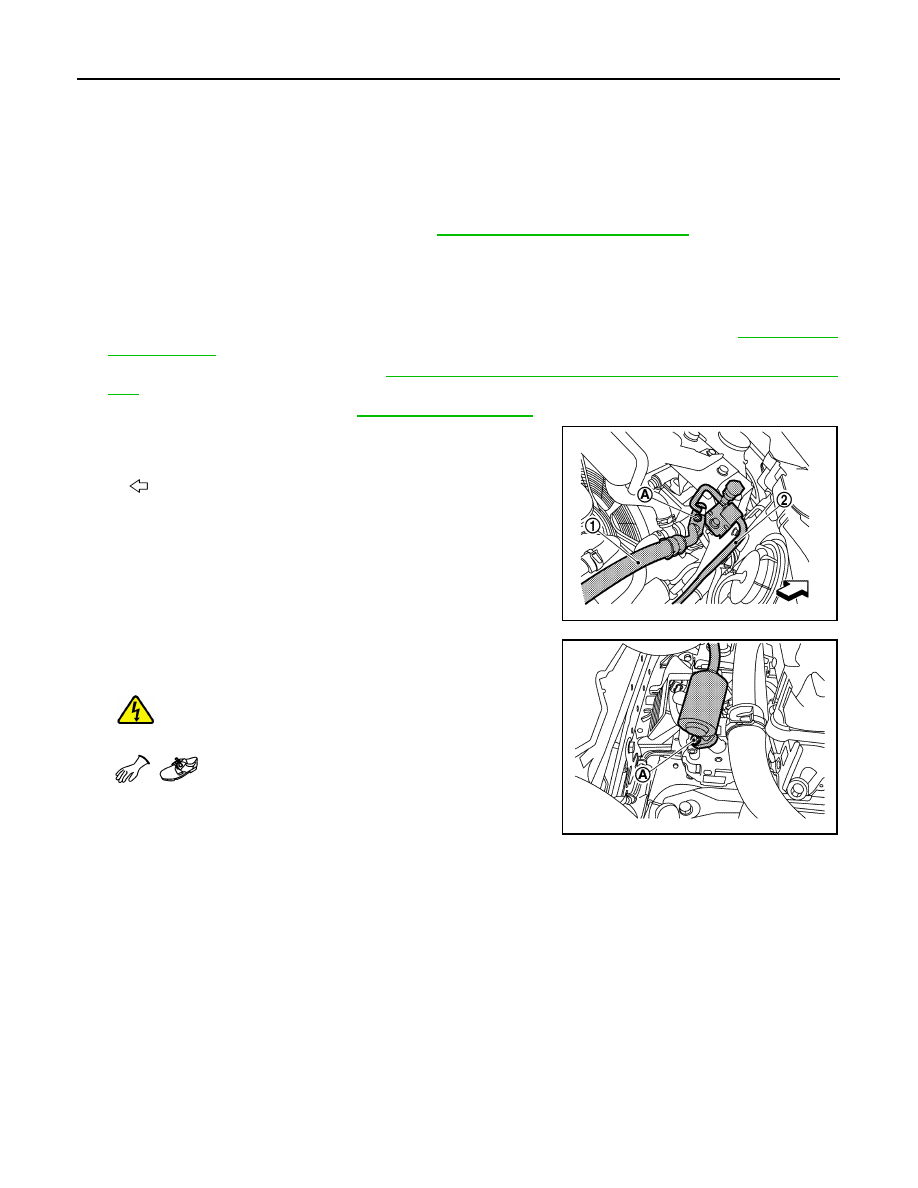Nissan Leaf. Manual - part 745

HA-102
< REMOVAL AND INSTALLATION >
[WITHOUT HEAT PUMP SYSTEM]
COOLER PIPE AND HOSE
• Be sure to remove the service plug in order to disconnect the high voltage circuits before perform-
ing inspection or maintenance of high voltage system harnesses and parts.
• The removed service plug must always be carried in a pocket of the responsible worker or placed in
the tool box during the procedure to prevent the plug from being connected by mistake.
• Be sure to wear insulating protective equipment consisting of glove, shoes, face shield and glasses
before beginning work on the high voltage system.
• Never allow workers other than the responsible person to touch the vehicle containing high voltage
parts. To keep others from touching the high voltage parts, these parts must be covered with an insu-
lating sheet except when using them. Refer to
GI-34, "High Voltage Precautions"
CAUTION:
Never bring the vehicle into the READY status with the service plug removed unless otherwise
instructed in the Service Manual. A malfunction may occur if this is not observed.
REMOVAL
1. Use the refrigerant recovery equipment (for HFC134a) and recover the refrigerant. Refer to
2. Remove radiator upper grille. Refer to
DLK-165, "RADIATOR UPPER GRILLE : Removal and Installa-
3. Remove washer tank inlet. Refer to
4. Remove bolt (A), and then disconnect high-pressure flexible
hose (1) from condenser.
CAUTION:
To prevent the inclusion of foreign matter, use a cap or vinyl
tape to seal off the connection ports of the pipe and con-
denser from the atmosphere.
5. Remove nut (A), and then disconnect high-pressure flexible
hose from electric compressor.
WARNING:
To prevent electric shock hazards, be sure to wear
protective gear.
CAUTION:
To prevent the inclusion of foreign matter, use a cap or vinyl
tape to seal off the connection ports of the pipe and electric
compressor from the atmosphere.
6. Disconnect high-pressure flexible hose from the vehicle.
INSTALLATION
Note the following items, and then install in the reverse order of removal.
CAUTION:
• To prevent degradation in insulation performance, use special electric compressor oil as the com-
pressor oil.
• In order to prevent conventional PAG oil from becoming mixed in, never reuse recovered compres-
sor oil and instead always use new oil. The use of oil including the conventional PAG oil may
degrade the performance of insulation.
• To prevent performance degradation, never use a fluorescent agent in order to detect refrigerant
leakage. Also be careful that a fluorescent agent never enter the oil.
• To prevent leakage of refrigerant, replace the O-ring with a new one. Apply a coat of compressor oil
to the O-ring prior to installation.
: Vehicle front
JMIIA2672ZZ
JMIIA2670ZZ